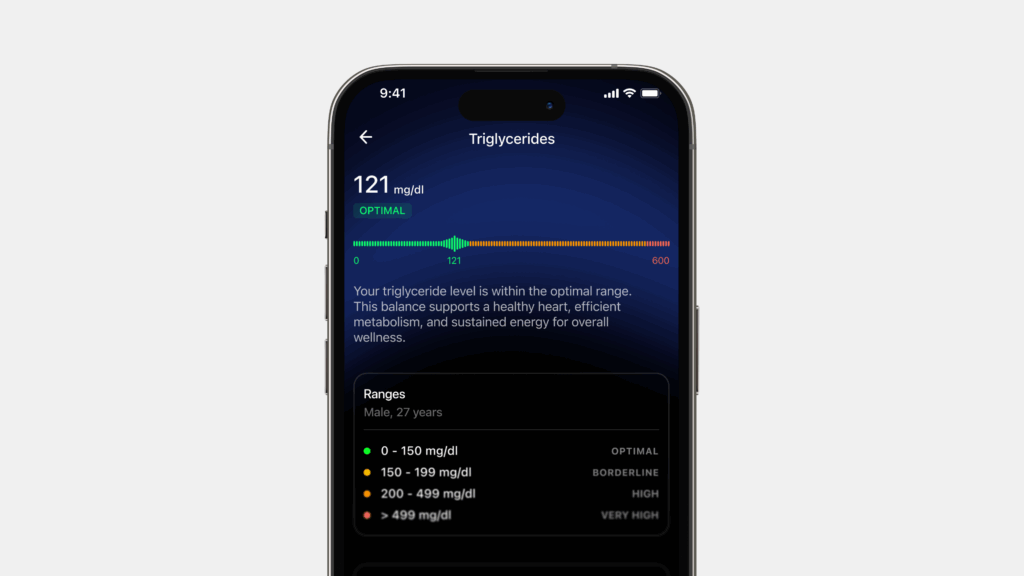Metabolic health and metabolism are mired in myths that obscure relevant facts. In this piece, we bust some myths to help you understand metabolism better.
What is Metabolism?
Metabolism refers to a series of chemical processes in each cell which transform the calories we eat into fuel to keep us alive. These processes sustain life and everyday functioning and include breaking down food and drink to energy and building or repairing our bodies. (Read our blog on deconstructing the basics of metabolism here).
What is Metabolic Health?
Metabolic health is described as having ideal levels of blood sugar, triglycerides, high-density lipoprotein (HDL) cholesterol, blood pressure, and waist circumference, without using medications.
Nine myths about metabolic health
Myth 1: Having small meals throughout the day is better for metabolism
The thermic effect of food is the energy required for digestion, absorption, and disposal of ingested nutrients. TEF uses 10% of energy. It is defined as the increase in metabolic rate after ingestion of a meal. The results of multiple studies that compare eating many small meals with fewer large meals have found that neither affects metabolic rate or fat loss significantly. Research suggests an inverse relationship between meal frequency (MF) and adiposity.
According to a recent meta-analysis of studies in this area, eating small meals throughout the day does not lead to weight loss. Studies, however, have shown that time-restricted feeding can reduce body fat. Furthermore, some studies suggest that frequent eating can cause glucose and insulin levels to remain elevated, without the possibility of returning to baseline levels. Consistently high insulin can prevent your body from burning fat leading to insulin resistance. (However, other studies suggest eating frequently lowers glucose levels; what you eat in those meals may be more important than how often you eat.)
Myth 2: Glucose spikes are normal and harmless bodily reactions to sugar
The level of our blood sugar will fluctuate a little throughout the day. There can be small fluctuations in mood, exercise, and sleep caused by a variety of factors. However, the extent matters. Diabetes, heart disease, and metabolic dysfunction have all been linked to high glucose variability. Glucose variability represents the quality of fuel and oxidative stress on your body. Keeping your blood glucose variability under 12% is considered an ideal range.
According to a study conducted in 2018, researchers used continuous glucose monitors (CGMs) to examine the blood glucose levels of 57 nondiabetic participants and found that their blood glucose levels spiked to degrees consistent with people with diabetes. These effects occurred most often after high-carbohydrate meals were consumed. A person with frequent spikes and crashes in their blood glucose levels could still show a normal A1c or fasting glucose level on a test. In addition, each time our blood sugar spikes, we trigger an enormous amount of insulin release, causing insulin resistance over time.
Myth 3: You only burn calories or improve your metabolic health by working out
Our bodies use energy in four ways:
1. Energy used at rest: The body’s basic functioning requires energy even when you are doing nothing. Your body is making your heart pump blood through your veins, maintaining body temperature or your kidney function is the minimum number of calories needed for basic functions at rest. This process is known as basal metabolism, and our basal metabolic rate is the measure. The BMR accounts for approximately 60 to 80 per cent of the daily energy expenditure. It includes energy used for cardiac function, brain, and other nerve functions. The normal BMR for a healthy man is around 7,100 kJ per day while the average BMR for a healthy woman is around 5,900 kJ per day. It’s important to note that the rate of energy expenditure varies during the course of the day. It is known to decrease with age. RMR or resting metabolic rate is the number of calories that your body burns while it’s at rest.
2. Energy used to break down food: This is called thermogenesis, as explained above.
3. Energy used for activity: Activity energy expenditure (AEE) is the most variable component. It includes exercise and non-exercise activity thermogenesis (NEAT). Exercise and NEAT can comprise 20–50% of total energy expenditure. NEAT is everything that we do that is not sleeping, eating, or sports-like exercise. It is the energy expended in daily tasks like standing, walking, typing, cooking, gardening, and even fidgeting.
4. Sleeping Metabolic Rate: SMR refers to the energy expended during sleep. According to Dr. Michael Breus, a sleep specialist, author and expert, glucose metabolism starts to increase in the second half of the night when you enter REM sleep. (Read more about the basics of metabolism on our blog.)
Physical activity is equated with any bodily movement produced by skeletal muscles that results in energy expenditure. Mild physical activity can also affect your metabolic health. can be defined in terms of metabolic equivalent. One MET or metabolic equivalent is the amount of oxygen consumed while sitting at rest. An activity categorised as 2 METS would translate into twice the amount of oxygen consumed while sitting at rest (1 MET). METS are an accommodating and standard method for understanding the intensity of physical activities. Some instances of mild physical activities include walking (i.e. shopping, walking around the office), sitting at your computer, making the bed, eating, preparing food, and washing dishes.
While it’s true that working out alone may not enhance your metabolic health, physical activity like strength training can better your metabolism and metabolic health by increasing your muscle mass and your insulin sensitivity. Cardiovascular activity can help you lose weight, rev up your large muscle groups and strengthen your heart amongst other benefits. High-intensity exercise is not the only way to burn calories but it is one of the most effective ways.
How to increase Metabolic Health?
Myth 4: Crash Diets Increase Metabolism
While speeding up metabolism depends on many factors, research has shown that there are certain things you can do to slow it down, such as drastic weight loss programs. Our resting metabolism is probably affected the most by crash diets. A phenomenon called adaptive thermogenesis or metabolic adaptation has been documented for years.
As people lose weight, their basal metabolic rate, the amount of energy they use to function when they are at rest, actually slows down more than what one may expect from the weight loss. Sandra Aamodt, a neuroscientist and author of the book Why Diets Make Us Fat, writes that this may be the body’s staunchly defensive way of preserving a certain weight range, called the set point.
A study caught up with the contestants from season eight of the reality TV show The Biggest Loser, who had lost tremendous weight at the end of the show in a short span of time. The researchers relied on measurements like body weight, fat, metabolism and hormones at the conclusion of the competition, after an extreme dietary regimen and six years down the line.
They found that the contestants had regained their weight, their metabolism had slowed down and their bodies were burning approximately 500 calories less each day across the six years. It was also found that by the end of the competition, the contestants’ leptin levels (the satiety or appetite-suppressing hormone) had drastically dropped, leaving them famished all the time. After six years, their leptin levels picked up — but only to about 60 per cent of their original levels before going on the show. (Read our blog on the long-term effects of fad diets.)

Myth 5: Sugar is the best source of energy
Even though sugar makes you feel zestful, it comes at a cost: the sugar crash. Insulin rises and lowers blood sugar, often below a healthy baseline, which can leave you feeling shaky, foggy, or even hungrier than before. Researchers found in a meta-analysis of studies that sugar does not lead to an improvement in mood and blood glucose level or alertness but rather amps up fatigue after consumption. Alternatively, a body that is adapted to burn fat efficiently taps into a more reliable and healthier source of energy. This is called metabolic flexibility. (Read about metabolic flexibility in our blog.)
According to Dr Bret Scher, a cardiologist and lipidologist in San Diego and medical director of Diet Doctor, sugar burns fast and catches fire quickly. Fat stores on the other hand burn slowly and steadily over time. The combination of regular exercise, intermittent fasting, and maintaining steady blood sugar levels helps your body burn fat more efficiently and not rely on sugar for quick energy. A wholesome diet that offers energy efficiency is the one that comprises good fats like avocados, complex carbs like whole grains and peas, and protein-rich foods like eggs, almonds and lentils.
Myth 6: Natural sugar should not be a concern
Added sugars can affect a person’s blood sugar levels more than whole sugars since natural sugars in their whole-food form often contain fibre, which slows glucose absorption and blunts spikes. Fibre aids digestion controls blood sugar and lowers cholesterol. But ultimately, the sugar will be absorbed.
Additionally, fruits that have been processed to remove fibre, like those found in juice, can cause significant glucose spikes. When it comes to figuring out healthy sugar intake levels, fruit is particularly confusing. Although fruit can be a healthy part of a person’s diet, eating fruit on its own, especially if eaten frequently, can keep blood sugar and insulin levels high. It can be rather unhealthy to consume five servings of fruit a day if you are overweight or insulin resistant. (Read about juicing vs. eating whole fruits on our blog.)
Fructose is a simple sugar found naturally in fruits and vegetables, but its metabolic effect can be detrimental in the guise of an added sweetener. It is generally camouflaged on food labels as corn syrup. The metabolization of fructose takes place in the liver but its heavy consumption can lead to fat build-up and consequently cause insulin resistance. (Read more about common foods that spike blood sugar on our blog and read about artificial sweeteners and blood glucose levels here. )
Myth 7: Metabolism cannot be changed
Although our genetics play a role in determining our metabolic rate, we can boost it by building lean muscle mass. Muscle is metabolically active since fat-burning enzymes are present in muscles. The more muscle you have, the more calories you burn. To keep your muscles working, you need more calories.
Muscle uses both fatty acids and glucose for energy, and provides amino acids for other tissues to use during intervals when we are not eating. People with lean, muscular bodies require more energy to function than people with higher body fat percentages. The metabolic activity of muscle mass is higher than that of fat mass. It is important to remember that metabolism is not a one-size-fits-all approach. It involves complex molecules and interrelated pathways and the metabolic rate varies from person to person. There are a variety of different factors that go into making your metabolism what it is, like your body type, gender and age, as well as others that are entirely individual.
Myth 8: Metabolism falls apart in adult life
Latest research contests the widely held belief that our metabolism drastically diminishes during our adult lives. Researchers found that metabolism crests around age 1. At this time, babies reportedly burn calories 50 per cent faster than adults, and then metabolism dips approximately 3 percent annually till the age of 20 years.
From there, metabolism plateaus until about age 60 and it begins to diminish languidly again, by less than 1 per cent annually. “Metabolic rate is really stable all through adult life, 20 to 60 years old,” the study author Herman Pontzer tells some leading science publications. A decline in the thermic effect of food, which has been variably observed in the older population, could predispose them to fat gain.
Several factors contribute to this, such as muscle loss and reduced activity levels. You burn calories based on sodium-potassium pumps and mitochondria, which are the cellular components that drive these reactions. Nerve impulses, muscle contractions, and heartbeats are generated by sodium-potassium pumps, while your cells are powered by mitochondria. In studies, it was found that both components lose effectiveness with age, resulting in a slowed metabolism. You can combat the impact of ageing on metabolism with exercise, good sleep, de-stressing and protein-rich foods. (Read our blog on what it means to speed up your metabolism.)
Myth 9: People who are thin have a ‘good’ metabolism & are metabolically healthy
People with a higher amount of lean mass, which includes connective tissue, muscle, and bone, burn more calories than those with a lower amount of lean mass. Imagine an athlete and a non-athlete with identical body weights; the athlete with a more muscular build will have a higher metabolism. The same is true for lean, muscular individuals weighing 120 pounds who have a relatively “fast” metabolism and healthy amounts of lean mass.
However, another 120-pound person may have a lot less lean mass and more body fat and therefore have a slower metabolism. While obesity is associated with insulin resistance, even people with normal weight can have poor metabolic health, which can lead to insulin resistance and other markers of metabolic syndrome, a group of conditions that increases the risk of heart disease, stroke, and diabetes. Those who are metabolically unhealthy but have a normal weight often have excess visceral fat, according to recent research.
Conclusion
The myths surrounding metabolism can lead to detrimental decisions about metabolic health. For the longest time, having small meals at intervals throughout the day was considered to be beneficial for metabolic health, but comparative studies are now examining the effect of intermittent fasting on metabolic health. Glucose spikes are perceived as normal bodily reactions in response to sugar, but major fluctuations (glucose variability) can be worrisome as they could increase the risk of metabolic dysfunction. Consuming natural sugars in excess can harm metabolic well-being as they keep blood sugar and insulin levels high. One of the most heard lines in this regard is, ‘thin people have a good metabolism and are metabolically healthy’, but that’s not always the case. Those with healthy weight, but poor activity levels and lifestyles can also have poor metabolism as well as deficient metabolic health. Research suggests that those who are metabolically unhealthy but have a normal weight usually have excess visceral fat. Metabolism is not a one-size-fits-all approach. An individualised approach to metabolism is ideal.
Disclaimer: The contents of this article are for general information and educational purposes only. It neither provides any medical advice nor intends to substitute professional medical opinion on the treatment, diagnosis, prevention or alleviation of any disease, disorder or disability. Always consult with your doctor or qualified healthcare professional about your health condition and/or concerns and before undertaking a new healthcare regimen including making any dietary or lifestyle changes.
References
- https://www.diabetes.co.uk/diabetes-and-metabolism.html
- https://www.frontiersin.org/articles/10.3389/fendo.2020.00058/full
- https://www.betterhealth.vic.gov.au/health/conditionsandtreatments/metabolism
- https://www.webmd.com/fitness-exercise/what-is-metabolism#1
- https://www.thoughtco.com/anabolism-catabolism-definition-examples-4178390








